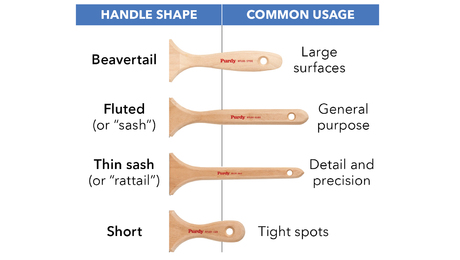I went by the metal supply place today to talk to them about my metal roof for my 10′ x 25′ shed roof off the side of the house. They were young welder types who just made stuff up as they went along it seemed like. I got some material sheets from American building products form them. They had 26 gauge and 29 gauge. I would rather go with a stronger sheet metal. Should I go thicker than 26 gauge?
Maybe I need to talk to a different supplier. I have a few design questions.
This side of the house is brick and it faces southwest so there is a lot of solar gain. We get a lot of sun days here in the front range of CO so in the future I ( or the next owner ) might put some sort of solar panels on this roof. I would like to built it strong enough for that.
I would like to use galvanized panels that have a big/deep corrugated bend in them. I want the roof to have that more modern look. You see it up in the mountains sometimes. I guess it doesn’t have to be corrugated but I like the galvanized look. This house needs updating and this is one place where I can at least start.
For the framing I would rather not sheet the roof. I’d like the sheet metal to be open on the bottom. So I would need to sheer up the roof with straps or blocking. It shouldn’t be that much more work. I’m doing and I don’t mind. Should I run two sets of blocking from the house out to the edge of the roof in a V? The handout form the city recommends 2″x 6″” 16″on center for the rafters.
I’m also going to run purlins ( that’s what the material sheet calls them) Say every 2′ for screwing down this roof. The purlins would have spacers on top of them with the wavy side up for fastening. These would support the sheets in the direction they will sag.
The top of the roof where it attaches to the house sits under a window so I can’t go any higher than 8′. That is the mortar joint that is just below the window. Should I take my diamond blade and let in a counter flashing about an inch? So my counter flashing is an 1″ x 2″? that goes over my flashing 3 x 6″ that goes over my roofing. What should I seal the counter flashing with where it is let into the mortar? Urethane caulking? The kind for cement products.
Since the top of this shed roof is only 8′ high at the mortar line, minus the flashing and the 2″x 6″”s, I would like to keep the pitch to a minimum so overhead inside and at the edge isn’t to low. Considering the roof will be sheet metal, it is a shed for storage, and it faces southwest (snow will melt off of it ), what is the minimum pitch I could do?
Thanks for your ideas!




















Replies
Lots of questions there, let's see how many i can hit before running out of steam...
The framing would be purlins laid flat over your rafters to sccrew the metal down too.
Howw close these are spaced depends on the metal itself and the snow load and wind lift load requirements locally. I used to be able to get harts from Metal Sales or whomever I was buying product from. Those charts let you know the spacoing based on the strength of the product they are selling and the loading requirements. For sonw in CO, I would not be surprised to see a 16" or 19.2" pueli spacing, especially at lower pitch, where snow will accumulate more.
I like at least a 2/12 pitch for metal and at that pitcch or lower, I used a butyl tape or ccaulk to seal laps.
There is no way in the world I would even consider using 29GA metal over purlins anyplace. Just too flimsy. I might use it on a economy job over solid plywood. Go with 24 or 26 gauge for sure.
You do not need the shaped spacers under this material. That is to keep bugs out from under ity at eaves on a plywood surface, and to keep wind from blowing rin up uder at the ridge. You could use it under your flashing at the head wall though, between roof materials and the flashing.
I am not at my PC where I have the sketches of flashing details. CU can probably explain that better than I can anyhow.
Here is one more tip - be sure thaat you aly out your purlins neat and parrallel, then you can stack the material and predrill all your holes on that layout at one time. Then when you are screwing it down, you get a neat look, it is easier to set screws, and faster and safer. Drill those holes slightly oversized for the fastener you are using, because metal does a lot of thermal movement and that stress can shear the heads off screws locked in too tight.
Pay attention to the drawings from the makers about how tight to set the sccrews. Too tight and you split the neoprene - not a good thing.
use a couple pairs of vice grips when installing. Set and screw first sheet straighht, then clamp the next to it before screwing. Time you get halfway acrtoss the roof, start checcking your aprralel to the final edge so you can adjust and be right on when you get over there.
OK, what did I miss?
Welcome to the
Taunton University of Knowledge FHB Campus at Breaktime.
where ...
Excellence is its own reward!
Thanks Piffin. On the purlins. Can I install them like blocking? In between the rafters?I'm trying to keep the roof from getting thicker. I don't mind the work. Actually, I'm looking forward to framing this. It's small and I'm doing it all myself so it's more fun. And I take my sweet time.
I'll ask about 24 gauge. there's no way I would use the 29 gauge and I really didn't like the 26 ga.
I might find another supplier. I'll call around and ask more questions over the phone. This was the first one.
I can see how intalling blocking instead of purlins would save thickness dimensions.But remember thise is what handles the weight of snow between th erafters.So I'd be wanting more than a couple 16d nails at each end
Welcome to the Taunton University of Knowledge FHB Campus at Breaktime. where ... Excellence is its own reward!
You could consider letting the purlins into the rafters if the AHJ will go for that. You'd need to fit them mighty tight so compressioin in thre rafter tops dopesn't create sagging
Welcome to the Taunton University of Knowledge FHB Campus at Breaktime. where ... Excellence is its own reward!
I see what you mean about the weight. It's because of the way the metal has no strength in that direction. I'll ask the inspector a bunch of questions like that. I can get the blocking strong. We'll see.
Should I take my diamond blade and let in a counter flashing about an inch?
yes
What should I seal the counter flashing with where it is let into the mortar?
We typically use Geocel 2300 caulk. It stays flexible, works realitively easy, and sticks well.
what is the minimum pitch I could do?
I'm assuming the 10' dimension is the rafter length. Every product has it's own installation rules, so you need to select a product that will allow the slope that you need. It's unlikely you'll find what you need in an exposed fastener system.
If I were you, I'd rethink the purlins and do solid sheathing. Add a layer of I&WS and then you can drop the slope and be reasonably sure it wont leak. Snow melt backing up at the wall flashing becomes the leak potential, so I'd turn the I&WS up the wall under the flashing. You could probably get away with a 29 ga in this scenario, but I'd probably use 26 ga. I'd try to find a galvalume coating rather than galvanized.
Before anybody jumps me, I understand this is a storage shed, not living space and this whole project is kind of "outside the box".
http://grantlogan.net/
I was born in a crossfire hurricane..........shooby dooby do
Thanks Grant. The sheathing with ice and water shield is a good idea. The snow sitting at the house and the shed junction is a potential leak point. I don't think it is going to be a problem but I want to be sure. The weather here is really pretty mild. They get these big snow falls but then it melts in a few day. We get so many sun days that this side of the house is warm all year round.
I've been getting ready for this shed excavating for the slab and believe me it's hot on that side of the house in the sun. But as soon as you get in the shade it's cool. It Because of the elevation and dry air.
You never did give a pitch. If I did the sheathing and the I&WS rolling it up under the flashing how shallow of a pitch?
I'll look for the Galvalume.
In a way, he did give a recommendation for pitch. He said that it depends on each manufacturers requirements for their product.One really good reason for galvalume for such low pitches is that it is more highly resistant to rusting, and as you decrease the pitch, you increase the likelihood that water will hang on the roof surface. Surface tension can keep it there a lot of places with as little as 1/2"/12.I am sitting here envisioning the whole thing and the fact that you said the upper wall tie in is going to be just under eight feet.With a 1/12 pitch, the lower edge is then 7' and the support structrue under that is really getting to be a head bumper. You may need to frame this so the subfascia IS theoutboard beam and the rafters tie to it,
OR
run heavier beam sized rafters from house to posts, then runn all other framing as purlins between the rafter-beams perpendicular to the pitch. Depending on spacing and layout, that might save you headroom and give you more of that look you are seeking for the bottom side, but it could make the engineering/permit trickier.
Welcome to the Taunton University of Knowledge FHB Campus at Breaktime. where ... Excellence is its own reward!
Thanks! I'll look for the Galvalume.
You said, "the subfascia IS theoutboard beam and the rafters tie to it" , and I think I'm seeing this right. Instead of running the rafters over the header I can just use some hangers and tie them into the side. I was only going to have an eave that hung over 4" anyway because of size restrictions. so supporting the end of the roof isn't a big issue. I have to be 5' away from the fence coming off the end of the roof. So to maximize the space in the shed I just did a 4" overhang.
We are on a small (by our standards) lot in town and I'm try to use every inch of it effectively. We have a partial basement that is improved so their is very little storage. this shed is going to real help with this but it need to be big enough to work. There's no sense in building one that stores just a little stuff.
Edited 9/28/2007 7:00 pm ET by popawheelie